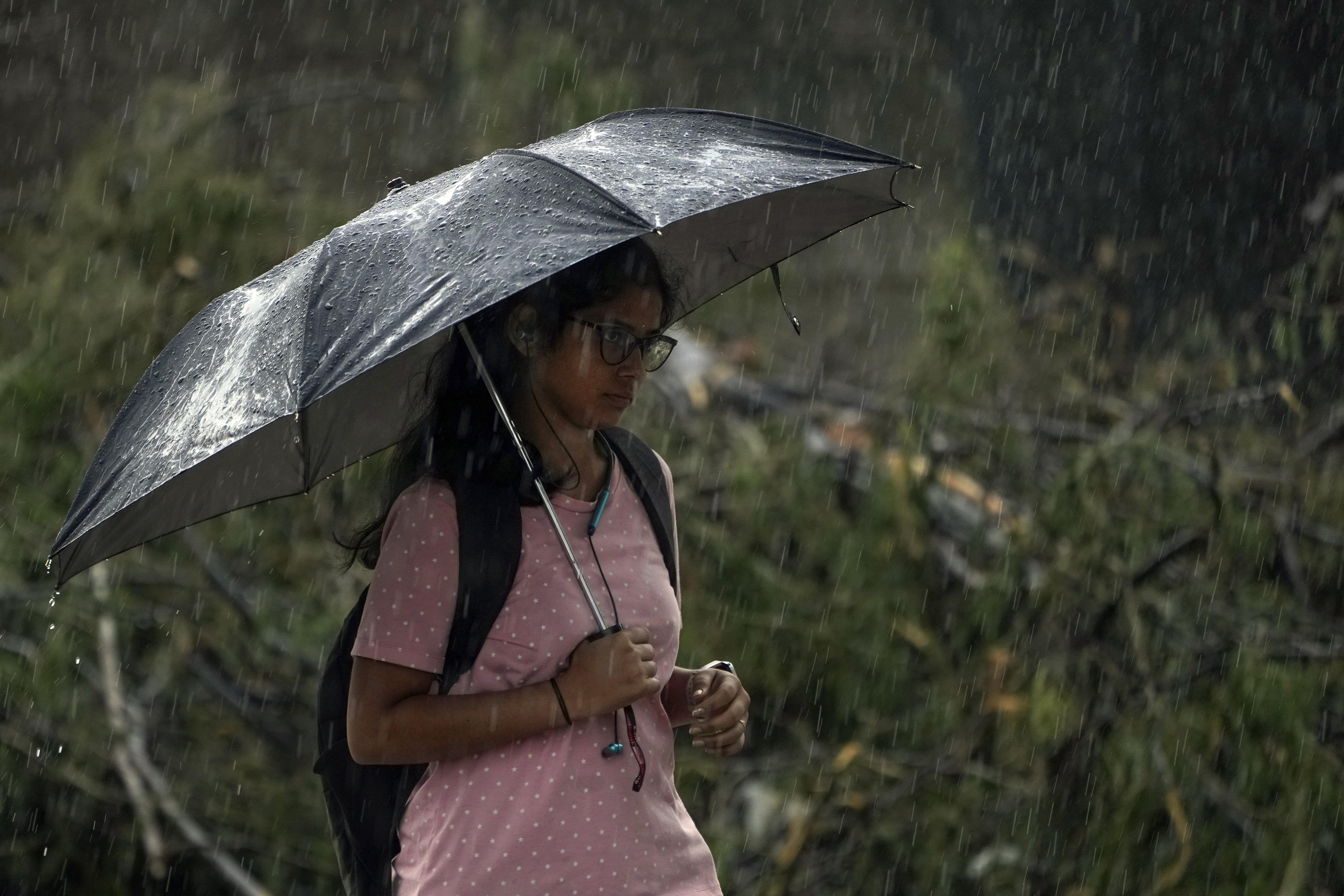 A woman walks in the rain in Hyderabad, India, Sept 13, 2023. (PHOTO / AP)
A woman walks in the rain in Hyderabad, India, Sept 13, 2023. (PHOTO / AP)
MUMBAI - India's monsoon rainfall this year was its lowest since 2018 as the El Nino weather pattern made August the driest in more than a century, the state-run weather department said on Saturday.
The monsoon, which is vital for India's $3 trillion economy, brings nearly 70 percent of the rain the country needs to water crops and replenish reservoirs and aquifers.
The erratic distribution of monsoon rains has led India, the world's largest rice exporter, to limit rice shipments, impose a 40 percent duty on onion exports, permit duty-free imports of pulses, and could potentially result in New Delhi banning sugar exports
Nearly half of the farmland in the world's most populous nation lacks irrigation, making the monsoon rains even more vital for agricultural production.
ALSO READ: From rice to wheat, Asian crops forecast lower as El Nino worsens
The summer rainfall deficit could make staples such as sugar, pulses, rice and vegetables more expensive and lift overall food inflation.
Lower production could also prompt India, the world's second-biggest producer of rice, wheat, and sugar, to impose more curbs on exports of these commodities.
Rainfall over the country during June to September was 94 percent of its long period average, the lowest since 2018, the India Meteorological Department (IMD) said in a statement.
The IMD had anticipated a rainfall deficit of 4 percent for the season, assuming limited impact from El Nino.
ALSO READ: Why El Nino is a concern for Indian monsoon rains?
El Nino is a warming of Pacific waters that is typically accompanied by drier conditions over the Indian subcontinent.
The monsoon was uneven, with June rains 9 percent below average because of the delay in the arrival of rains, but July rains rebounding to 13 percent above average.
August was the driest on record with a 36 percent deficit, but again in September rainfall revived and the country received 13% more rainfall than the normal, the IMD said.
The erratic distribution of monsoon rains has led India, the world's largest rice exporter, to limit rice shipments, impose a 40 percent duty on onion exports, permit duty-free imports of pulses, and could potentially result in New Delhi banning sugar exports.
READ MORE: India rice export ban tightens supply crunch in developing regions
The country is expected to receive normal rainfall during October to December, the weather department said, adding that temperatures were likely to remain above normal in most of the country during October.


